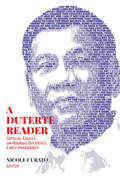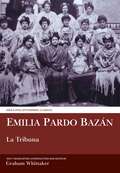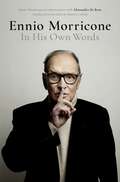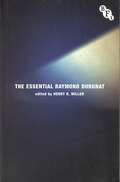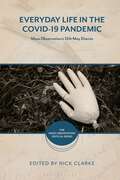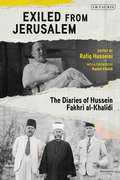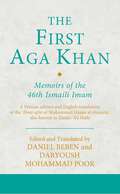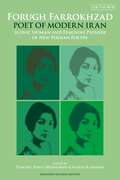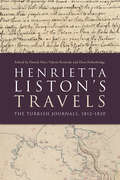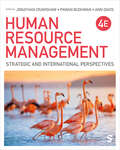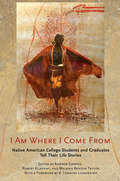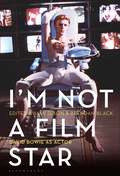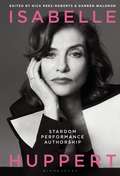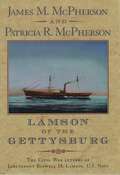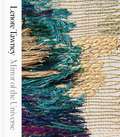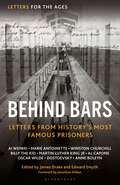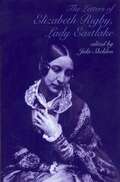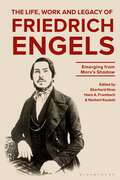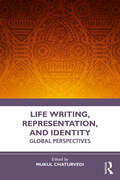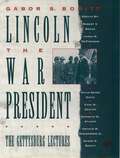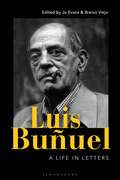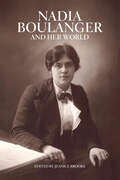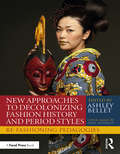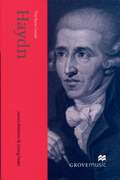- Table View
- List View
A Duterte Reader: Critical Essays on Rodrigo Duterte's Early Presidency
A critical analysis of one of the most media-savvy authoritarian rulers of our time, this collection of essays offers an overview of Duterte’s rise to power and actions of his early presidency. With contributions from leading experts on the society and history of the Phillipines, The Duterte Reader is necessary reading for anyone needing to contextualize and understand the history and social forces that have shaped contemporary Philippine politics.
Emilia Pardo Bazán: La Tribuna (Aris & Phillips Hispanic Classics)
Emilia Pardo Bazán was born in the Galician town of A Coruña into a noble family who nurtured her lifelong thirst for knowledge. She is undoubtedly the most controversial, influential and prolific Spanish female writer of the nineteenth century, publishing a vast number of essays, social commentaries, articles, reviews, poems, plays, novels, novellas and short stories. Her third novel, La Tribuna, heralds a new age in Spanish literature, a naturalist work of fiction that examines the situation of contemporary women workers. The author's preparation for the novel involved reading and consulting contemporary pamphlets and newspapers, as well as spending two months in a Galician tobacco factory observing and listening to conversations. This method, common in English writers like Dickens and frequently adopted in France by the masters of Realism, was almost unprecedented in Spain. Set against a background of turmoil and civil unrest, La Tribuna reflects the author's interest in the position of women in Spanish society. The working-class heroine, Amparo, develops from a shapeless, apolitical street urchin into a masterpiece of femininity, a charismatic orator who becomes a 'tribune' of the people. At the same time, however, she allows herself to be seduced by a prosperous middle-class youth whose promises prove to be just as empty as the revolutionary slogans in which she believes so fervently.
Encyclopedia of Public Health [2 volumes]: Principles, People, and Programs [2 volumes]
Providing context to today's public health practices and broad coverage of topics, this book demonstrates how cross-disciplinary studies are critical to addressing current health issues.The concepts of public health and the methods we use to care for and promote the health of people in communities, groups, and our nation as a whole are of interest to all health professionals. Comprising contributions from historians, scholars, researchers, sociologists, and other public health professionals, the Encyclopedia of Public Health: Principles, People, and Programs offers a firsthand, in-depth view of public health as it applies to everyday life and practice. The encyclopedia contains a wealth of information on critical theories, people, and movements and shows how various disciplines can work together to create healthy communities and practices for many people. As a secondary objective, the book encourages future generations to actively participate in public health. This reference covers the defining moments in the development of public health, from ancient times to the modern day, and offers entries with historical information and examinations of current controversies as they relate to recurring social conflicts. The entries provide a breadth and depth of content that is accessible to a wide readership. Readers will understand the benefits of physical activity and good nutrition as well as the psychology behind the choices that we make and how early life and social experiences can influence behaviors even decades after the event. The wide variety of topics covered includes the life expectancy of Americans at birth, the Tuskegee syphilis study, and marijuana use, and will give readers an informed perspective on past public health successes and likely directions for the future.
Ennio Morricone: In His Own Words
Master composer Ennio Morricone's scores go hand-in-hand with the idea of the Western film. Often considered the world's greatest living film composer, and most widely known for his innovative scores to The Good, the Bad, and the Ugly and the other Sergio Leone's movies, The Mission, Cinema Paradiso and more recently, The Hateful Eight, Morricone has spent the past 60 years reinventing the sound of cinema. In Ennio Morricone: In His Own Words, composers Ennio Morricone and Alessandro De Rosa present a years-long discussion of life, music, and the marvelous and unpredictable ways that the two come into contact with and influence each other. The result is what Morricone himself defines: "beyond a shadow of a doubt the best book ever written about me, the most authentic, the most detailed and well curated. The truest." Opening for the first time the door of his creative laboratory, Morricone offers an exhaustive and rich account of his life, from his early years of study to genre-defining collaborations with the most important Italian and international directors, including Leone, Bertolucci, Pasolini, Argento, Tornatore, Malick, Carpenter, Stone, Nichols, De Palma, Beatty, Levinson, Almodóvar, Polanski, and Tarantino. In the process, Morricone unveils the curious relationship that links music and images in cinema, as well as the creative urgency at the foundation of his experimentations with "absolute music". Throughout these conversations with De Rosa, Morricone dispenses invaluable insights not only on composing but also on the broader process of adaptation and what it means to be human. As he reminds us, "Coming into contact with memories doesn't only entail the melancholy of something that slips away with time, but also looking forward, understanding who I am now. And who knows what else may still happen."
The Essential Raymond Durgnat
Raymond durgnat was a maverick voice during the golden age of film criticism. From the French new Wave and the rise of auteurism, through the late 1960s counter-culture, to the rejuvenated Hollywood of the 1970s, his work appeared in dozens of publications in Britain, France and the USA. At once evoking the film culture of his own times and anticipating our digital age in which technology allows everyone to create their own 'moving image-text combos', durgnat's writings touch on crucial questions in film criticism that resonate more than ever today. Bringing together durgnat's essential writing for the very first time, this career-spanning collection includes previously unpublished and untranslated work and is thoroughly introduced and annotated by Henry K. Miller.
Everyday Life in the Covid-19 Pandemic: Mass Observation's 12th May Diaries (The Mass-Observation Critical Series)
How will the Covid-19 pandemic be remembered? What did it mean to people? How did it feel? This book provides a compelling account of the pandemic as it was experienced in the UK. Everyday Life in the Covid-19 Pandemic is a democratic history based on the 5,000 diaries collected by Mass Observation on 12 May 2020. It is a record of what many of these diarists wrote, from a wide range of positions, in a variety of voices and on a wealth of different subjects. The book shines a light on their lives on the day in question, their experiences during the first two months of the pandemic, and their hopes and fears for the coming months and years. The diaries capture much of everyday life in the pandemic for millions of people in the UK and beyond: the activities, events, and rituals (from funerals to working from home); the sites and stages (from shops to Zoom); the roles and categories (from 'key workers' to 'vulnerable groups'); the frames (from luck to 'the new normal'); and the moods (from anxiety to grief). In these diaries, we see what people did when the pandemic arrived in the UK, but also what people thought and felt – how they interpreted the pandemic experience and gave it meaning. We see both how the nation responded and the nation who responded. The book also includes two essays offering expert contextualisation of the diaries and discussion of their value for narrating the pandemic and presenting everyday life.
Exiled from Jerusalem: The Diaries of Hussein Fakhri al-Khalidi
The diaries of Dr Hussein Fakhri al-Khalidi offer a unique insight to the peculiarities of colonialism that have shaped Palestinian history. Elected mayor of Jerusalem – his city of birth – in 1935, the physician played a leading role in the Palestinian Rebellion of the next year, with profound consequences for the future of Palestinian resistance and British colonial rule. One of many Palestinian leaders deported as a result of the uprising, it was in British-imposed exile in the Seychelles Islands that al-Khalidi began his diaries. Written with equal attention to lively personal encounters and ongoing political upheavals, entries in the diaries cover his sudden arrest and deportation by the colonial authorities, the fifteen months of exile on the tropical island, and his subsequent return to political activity in London then Beirut. The diaries provide a historical and personal lens into Palestinian political life in the late 1930s, a period critical to understanding the catastrophic 1948 exodus and dispossession of the Palestinian people. With an introduction by Rashid Khalidi the publication of these diaries offers a wealth of primary material and a perspective on the struggle against colonialism that will be of great value to anyone interested in the Palestinian predicament, past and present.
The First Aga Khan: A Persian Edition and English Translation of Hasan 'Ali Shah's Tarkha-i 'ibrat-afza (Ismaili Texts and Translations)
I.B. Tauris in association with the Institute of Ismaili StudiesMuhammad Hasan al-Husayni, also known as Hasan 'Ali Shah and, more generally, as the Aga Khan (1804-1881), was the 46th Imam of the Nizari Ismailis and the first Ismaili Imam to bear the title of Aga Khan, bestowed on him by the contemporary Qajar monarch of Persia. This book is the first English translation of his memoirs, the 'Ibrat-afza, `A Book of Exhortation, or Example', and includes a new edition of the Persian text and a detailed introduction to the work and its context. The 'Ibrat-afza was composed in the year 1851, following the Ismaili Imam's departure from Persia and his permanent settlement in India. The text recounts the Aga Khan's early life and political career as the governor of the province of Kirman in Persia, and narrates the dramatic events of his conflict with the Qajar establishment followed by his subsequent travels and exploits in Afghanistan and British India. The 'Ibrat-afza provides a rare example of an autobiographical account from an Ismaili Imam and a first-hand perspective on the regional politics of the age. It offers a window into the history of the Ismailis of Persia, India and Central Asia at the dawn of the modern era of their history. Consequently, the book will be of great interest to both researchers and general readers interested in Ismaili history and in the history of the Islamic world in the nineteenth century.
Forugh Farrokhzad, Poet of Modern Iran: Iconic Woman and Feminine Pioneer of New Persian Poetry
The pioneering Iranian poet and filmmaker Forugh Farrokhzad was an iconic figure in her own day and has come to represent the spirit of revolt against patriarchal and cultural norms in 1960s Iran. Five decades after her tragic death at the age of 32, Forugh Farrokhzad, Poet of Modern Iran brings her ground-breaking work into new focus. During her lifetime Farrokhzad embodied the vexed predicament of the contemporary Iranian woman, at once subjected to long-held traditional practices and influenced by newly introduced modern social sensibilities. Highlighting her literary and cinematic innovation, this volume examines the unique place Farrokhzad occupies in Iran, both among modern Persian poets in general and as an Iranian woman writer in particular. The authors also explore Farrokhzad's appeal outside Iran in the Iranian diasporic imagination and through the numerous translations of her poetry into English. It is a fitting and authoritative tribute to the work of a remarkable woman which will introduce and explain her legacy for a 21st-century audience.This second edition includes two new chapters which explore a travelogue Farrokhzad wrote during her time in Italy, and an examination of Farrokhzad's influence on the writings of the Afghan female poet Laila Sarahat Rowshani.
Henrietta Liston's Travels: The Turkish Journals, 1812-1823
Henrietta Liston’s Constantinople journal is a significant and hitherto virtually unknown work of women's travel writing. As the wife of the British Ambassador to the Porte, Liston had privileged access to parts of the Sultan’s entourage and the Ottoman elite. Her journal details her journey by sea from England to Istanbul and the diplomatic mission’s Mediterranean stops at the time of the Napoleonic wars and reflects on the political situation of Europe, focusing in particular on the British and the Ottoman Empires. Yet it also offers a human-centred version of the picturesque, and includes depictions of a plague-ridden Constantinople, a visit to the harem of the Kaimakam, excursions to Belgrade Village, the presentation of ambassadors in the Seraglio, and the departure of pilgrims on the hajj. This edition features Liston’s journal alongside a selection of her other, shorter writings from Turkey, including accounts of key diplomatic incidents and personal experiences.
Human Resource Management: Strategic and International Perspectives
This popular text treats international, strategic and contemporary issues as central to the study and practice of Human Resource Management. Its practical focus helps you develop the skills needed for the world of work, through learning features such as HRM in Practice, Developing Key Skills and Debating HRM. The fourth edition has been thoroughly updated and brings you: • Case studies which offer a link between theory and practical challenges in the international HR environment • A new chapter on Work-Related Mental Health and Wellbeing • Coverage of cutting-edge topics such as Diversity and Inclusion, Sustainability, Artificial Intelligence and Corporate Social Responsibility • NEW Future Insights and Considering Sustainability features Jonathan R. Crawshaw is Senior Lecturer (Associate Professor) and Director of Research for the Work and Organisation Department at Aston Business School, Aston University. Pawan Budhwar is the 50th Anniversary Professor of International HRM at Aston Business school. Ann Davis is Professor and Associate Dean for Academic Resourcing and Development at the University of Sydney Business School.
I Am Where I Come From: Native American College Students and Graduates Tell Their Life Stories
"The organizing principle for this anthology is the common Native American heritage of its authors; and yet that thread proves to be the most tenuous of all, as the experience of indigeneity differs radically for each of them. While many experience a centripetal pull toward a cohesive Indian experience, the indications throughout these essays lean toward a richer, more illustrative panorama of difference. What tends to bind them together are not cultural practices or spiritual attitudes per se, but rather circumstances that have no exclusive province in Indian country: that is, first and foremost, poverty, and its attendant symptoms of violence, substance abuse, and both physical and mental illness.... Education plays a critical role in such lives: many of the authors recall adoring school as young people, as it constituted a place of escape and a rare opportunity to thrive.... While many of the writers do return to their tribal communities after graduation, ideas about 'home' become more malleable and complicated."—from the IntroductionI Am Where I Come From presents the autobiographies of thirteen Native American undergraduates and graduates of Dartmouth College, ten of them current and recent students. Twenty years ago, Cornell University Press published First Person, First Peoples: Native American College Graduates Tell Their Life Stories, also about the experiences of Native American students at Dartmouth College. I Am Where I Come From addresses similar themes and experiences, but it is very much a new book for a new generation of college students.Three of the essays from the earlier book are gathered into a section titled "Continuing Education," each followed by a shorter reflection from the author on his or her experience since writing the original essay. All three have changed jobs multiple times, returned to school for advanced degrees, started and increased their families, and, along the way, continuously revised and refined what it means to be Indian.The autobiographies contained in I Am Where I Come From explore issues of native identity, adjustment to the college environment, cultural and familial influences, and academic and career aspirations. The memoirs are notable for their eloquence and bravery.
I’m Not a Film Star: David Bowie as Actor
The first collection dedicated to David Bowie's acting career shows that his film characterisations and performance styles shift and reform as decoratively as his musical personas. Though he was described as the most influential pop artis of the 20th century, whose work became synonymous with mask, mystery, sexual excess and ch-ch-ch-changing genres, Bowie also applied his genius to the craft of acting.Bowie's considerable filmography is systematically examined in 12 scholarly essays that include tributes to Bowie's performance craft in other media forms. Classic films such as The Prestige and Merry Christmas, Mr. Lawrence, cult hits Labyrinth and The Man Who Fell To Earth, as well as lesser-known roles in The Image, Christiane F. and Broadway hit The Elephant Man are viewed, not simply through the lens of Bowie's mega-stardom, but as the work of a serious actor with inimitable talent. This compelling analysis celebrates the risk-taking intelligence and bravura of David Bowie: actor, mime, mimic and icon.
Isabelle Huppert: Stardom, Performance, Authorship
Featuring a lineup of distinguished academics, this collection remedies the absence of scholarly attention on French cinematic legend Isabelle Huppert. This volume deconstructs Huppert's star persona and public profile through critical and theoretical analysis of her various screen roles-from her very early appearances alongside Romy Schneider in César et Rosalie (Sautet, 1972) and Gérard Depardieu in Les Valseuses (1974) to a number of celebrated collaborations with high-profile European auteurs such as Catherine Breillat, Claire Denis, Jean-Luc Godard, Michael Haneke and Joseph Losey, and with more popular auteurs such as Claude Chabrol and François Ozon. Known for a cerebral internalization of characterization, a technical mastery of extreme emotions, and a singular brand of icy intellectualism, Huppert's performances continue to impress, stun and surprise audiences. By focusing on several theoretical questions that relate to image, identity, sexuality and place, this volume situates Huppert's star persona in the more practical creative contexts of performance, authorship, genre and collaboration. This volume contrasts complementary critical accounts of her stardom by working across the different periods and territories of her career.
Lamson of the Gettysburg: The Civil War Letters of Lieutenant Roswell H. Lamson, U.S. Navy
Roswell Lamson was one of the boldest and most skillful young officers in the Union navy. Second in the class of 1862 at Annapolis (he took his final exam while at sea during the war), he commanded more ships and flotillas than any other officer of his age or rank in the service, climaxed by his captaincy of the navy's fastest ship in 1864, USS Gettysburg. Now, in Lamson of the Gettysburg, we have the war-time letters of this striking naval figure. What's more, these are letters of exceptional quality. James M. McPherson, co-editor of the collection with his wife Patricia and one of America's preeminent Civil War historians, writes that "few sets of letters equal and none surpass those of Lamson for richness of description, scope of coverage, or keenness of perception and analysis." Indeed, the McPhersons term Lamson's correspondence "the best Civil War navy letters we have ever read or expect to read." Throughout the war, Lamson always seemed to be where the action was on the South Atlantic coast, and these letters describe with striking immediacy the part he played in these events. While serving on the USS Wabash, for instance, he directed the big deck guns that did the most damage to enemy forts at Hatteras Inlet and Port Royal, two major naval victories. He was the officer who took command of the CSS Planter in May 1862, when slaves led by Robert Smalls ran her past Confederate fortifications in Charleston harbor and delivered her to the Union fleet. He commanded a gunboat fleet on the Nansemond River that helped stop James Longstreet's advance on Norfolk. In a daring attempt to blow up Fort Fisher, the huge earthwork fortress that guarded the entrance into the Cape Fear river, he towed the USS Louisiana (packed with more than two hundred tons of gunpowder) directly under the guns of the fort, sneaking into the shallows behind a rebel blockade runner, (Lamson describes "a terrific explosion. An immense column of flame rose towards the sky, and four distinct reports like that of sharp heavy thunder were heard and a dense mass of smoke enveloped everything"). And a few weeks later, he led a contingent of seventy men from the Gettysburg as part of the January 15, 1865 assault on the sea-face parapets of Fort Fisher, where he himself was wounded and his close friend, Samuel W. Preston, died. The letters also capture the spirited personality of Lamson himself, resolved to "stand by the Union as long as there is a plank afloat," but also deeply ambivalent about the war. In a moving passage early in the collection, he describes leaving Annapolis for war duty on the USS Constitution (Old Ironsides): "We gave three cheers for Capt R., three for the troops, and for old friendship's sake three for those of our number who intending to resign [to join the Confederacy] were requested not to go on board. Some of my best friends were among them. This will be a sad sad war. It will be more painful to strike than to be struck." The publication of the letters of Roswell Lamson marks a major addition to Civil War literature. Featuring superb introductions to each section as well as informative notes that explain references in the correspondence to people, ships, land and sea battles, or homefront news, Lamson of The Gettysburg now joins the first rank of Civil War sources. One of the few accounts we have from the perspective of a navy officer, it is a book that everyone interested in the Civil War or in American naval history will want to read.
Lenore Tawney: Mirror of the Universe
Recent years have seen an enormous surge of interest in fiber arts, with works made of thread on display in art museums around the world. But this art form only began to transcend its origins as a humble craft in the late nineteenth and early twentieth centuries, and it wasn’t until the 1950s and 1960s that artists used the fiber arts to build critical practices that challenged the definitions of painting, drawing, and sculpture. One of those artists was Lenore Tawney (1907–2007). Raised and trained in Chicago before she moved to New York, Tawney had a storied career. She was known for employing an ancient Peruvian gauze weave technique to create a painterly effect that appeared to float in space rather than cling to the wall, as well as for being one of the first artists to blend sculptural techniques with weaving practices and, in the process, pioneered a new direction in fiber art. Despite her prominence on the New York art scene, however, she has only recently begun to receive her due from the greater art world. Accompanying a retrospective at the John Michael Kohler Arts Center, this catalog features a comprehensive biography of Tawney, additional essays on her work, and two hundred full-color illustrations, making it of interest to contemporary artists, art historians, and the growing audience for fiber art. Copublished with the John Michael Kohler Arts Center.
Letters for the Ages Behind Bars: Letters from History's Most Famous Prisoners (Letters for the Ages)
Letters for the Ages Behind Bars is a history of imprisonment told through the letters of people incarcerated over many centuries, for crimes committed or sometimes even for no reason at all. It is a story that runs from St Paul right up to the present day.The act of depriving someone of their liberty is one of humankind's most enduring responses to 'crime' through history. What society has sought to achieve over the years by doing so has shifted across the centuries and there is now a variety of purposes: to express disapproval; for the purpose of straight-up punishment through the removal of freedom; to protect the general public; to rehabilitate, perhaps even to forget about those with whom we simply cannot cope. The letters assembled here come from all parts of the world, and from time immemorial: Thomas Cromwell, Mary Queen of Scots, Eamon De Valera, Al Capone, Martin Luther King and many more.These letters not only reveal what it is like to be behind bars, but raise issues that are still of pressing interest for us today - such as the death penalty, miscarriages of justice, redemption and social change. They shed light on a system which is primarily one of contradictions – there are letters which inspire, horrify, letters which awe and condemn – even letters which make you laugh or cry.
The Letters of Elizabeth Rigby, Lady Eastlake (Liverpool English Texts and Studies #55)
An Open Access edition of this book is available on the Liverpool University Press website and the OAPEN library. 2009 was the bicentenary of the birth of the English writer, translator, critic and amateur artist Elizabeth Rigby, Lady Eastlake (1809-1893). Bringing together a comprehensive collection of her surviving correspondence, the Letters of Elizabeth Rigby, Lady Eastlake reveals significant new material about this extraordinary figure in Victorian society. The scope of Lady Eastlake’s writing is wide and interdisciplinary, which recommends her as a significant figure in Victorian culture, giving rise to revelations about the ways in which different cultural activities were linked. Lady Eastlake lived for extended periods of time abroad in Germany and Estonia, and wrote an early work about her impressions of the Baltic, her subsequent writing took the form of reviews for the periodical press, including reviews of Jane Eyre, Vanity Fair, Ruskin, Coleridge, and Madame de Stael. She also wrote on women’s subjects, including articles on the education of women. However, the great proportions of her publications are art-related reviews: she wrote one of earliest critical texts on photography and produced several essays on artists. The lively correspondence of Lady Eastlake not only contributes to a more holistic understanding of nineteenth-century culture, it also shows how a well connected woman could play an important role in the Victorian art world.
The Life, Work and Legacy of Friedrich Engels: Emerging from Marx’s Shadow
As the author of The Condition of the Working Class in England and, along with Karl Marx, The Communist Manifesto, Friedrich Engels is a seminal 19th-century figure; the co-founder of Marxism, he left an indelible impression as a philosopher, political theorist, economist, historian and revolutionary socialist. The Life, Work and Legacy of Friedrich Engels is nevertheless the first book to comprehensively explore Engels' contributions in all of these spheres.The book sees 13 experts from a range of scholarly backgrounds examine Engels and his writing in relation to topics including the United States and the future of capitalism, European social democracy and the nature of the political economy, with technology, capital, and labor acting as fundamental cross-cutting themes throughout. The volume analyses the intriguing relationship between Engels and Karl Marx, the towering historical figure whose long shadow has obscured the achievements of Engels for so long, and reassesses Engels' significance in this context. There are 66 images to be found throughout the text, 30 of these in colour, as well as a conclusion which successfully views Engels in the context of the age.As a journalist, author and communist figurehead, Engels dealt succinctly – and with strong opinions – with the core questions of the developments changing the globe in the 19th century and The Life, Work and Legacy of Friedrich Engels finally shines a light on this in a compelling call for revisionism.
Life Writing, Representation and Identity: Global Perspectives
This book focuses on varied forms of self-referential storytelling or life writing and its emergence as a democratic and inclusive genre, both globally and in India, and its intersections with history, fiction, memory, truth and identity. The book examines the practice of life writing and its scope for accommodating diverse voices, distinct identities, collaborations and non-hierarchical connections as it gives voice to oral, silenced and marginalized communities. It explores forms like auto/biographical fiction, digital storytelling, graphic memoirs, and testimonies of migration and exile, among others. The eclectic collection of essays in this volume draws attention towards the transformative possibilities of life writing as it engages with issues of resistance, recuperation, re-inscribing individual and collective memories, histories, and promotes an understanding of multicultural others. Focusing on the multiple ways in which the production, circulation, and consumption of life writing has helped to reimagine and redefine individual and collective identities in different cultural and geopolitical contexts, the collection breaks new ground by initiating a cross-cultural perspective in life writing studies. The book aims to encourage critical engagement with a vastly growing body of literature that has seen a publishing and translation boom in contemporary times, both globally and in India. With life writing emerging as a robust area of research, this edited collection provides a much-needed impetus to critically engage with issues of self-representation, memory and identity in recent times. This volume will serve as a significant and rich resource for university students, researchers, and academics of literature, comparative studies, cultural studies, history, indigenous studies and digital and media studies.
Lincoln, the War President: The Gettysburg Lectures (Gettysburg Civil War Institute Books)
"Americans interested in history need to make the pilgrimage to Gettysburg," writes Gabor Boritt in the Acknowledgments. In this book seven historians make that journey, five of them Pulitzer laureates, looking for Lincoln. Kenneth Stampp explores the issue of national self-determination, comparing the South's struggle for independence to others in history (including the post-Soviets in eastern Europe). Arthur Schlessinger, Jr. offers a provocative comparison of how Lincoln and our other outstanding war president, FDR, went beyond the limits of the Constitution--and why. David Brion Davis focuses on the moment of emancipation. Boritt traces Lincoln's transition from a strident war opponent as a young man to resolute war leader as president. Carl Degler compares the American attempt at national unification with the unifications of Italy, Germany, and other nations. Robert Bruce contrasts premonitions of civil war with Lincoln's reluctance to accept war as a possibility. And James McPherson establishes once and for all the war president's brilliance as a national strategist. These outstanding essays--all but one published here for the first time--offer a new understanding of a revolutionary epoch in American history, and of the role of the leader who helped transform the nation forever.
Luis Buñuel: A Life in Letters
Luis Buñuel: A Life in Letters provides access for the first time to an annotated English-language version of around 250 of the most important and most widely relevant of these letters. Buñuel (1900-1983) came to international attention with his first films, Un Chien Andalou (with Dalí, 1929) and L'Âge d'Or (1930): two surprisingly avant-garde productions that established his position as the undisputed master of Surrealist filmmaking. He went on to make 30 full-length features in France, the US and Mexico, and consolidated his international reputation with a Palme d'Or for Viridiana in 1961, and an Academy Award in 1973 for The Discreet Charm of the Bourgeoisie. He corresponded with some of the most famous writers, directors, actors and artists of his generation and the list of these correspondents reads like a roll call of major twentieth-century cultural icons: Fellini, Truffaut, Vigo, Aragon, Dalí, Unik - and yet none of this material has been accessible outside specialist archives and a very small number of publications in Spanish and French.
Nadia Boulanger and Her World (Bard Music Festival)
Nadia Boulanger (1887–1979) was arguably one of the most iconic figures in twentieth-century music, and certainly among the most prominent musicians of her time. For many composers— especially Americans from Aaron Copland to Philip Glass—studying with Boulanger in Paris or Fontainebleau was a formative moment in a creative career. Composer, performer, conductor, impresario, and charismatic and inspirational teacher, Boulanger engaged in a vast array of activities in a variety of media, from private composition lessons and lecture-recitals to radio broadcasts, recordings, and public performances. But how to define and account for Boulanger’s impact on the music world is still unclear. Nadia Boulanger and Her World takes us from a time in the late nineteenth century, when many careers in music were almost entirely closed to women, to the moment in the late twentieth century when those careers were becoming a reality. Contributors consider Boulanger’s work in the worlds of composition, musical analysis, and pedagogy and explore the geographies of transatlantic and international exchange and disruption within which her career unfolded. Ultimately, this volume takes its title as a topic for exploration—asking what worlds Boulanger belonged to, and in what sense we can consider any of them to be “hers.”
New Approaches to Decolonizing Fashion History and Period Styles: Re-Fashioning Pedagogies
New Approaches to Decolonizing Fashion History and Period Styles: Re-Fashioning Pedagogies offers a wide array of inclusive, global, practical approaches for teaching costume and fashion history. Costume designers, technicians, and historians have spent the last several years re-evaluating how they teach costume and fashion history, acknowledging the need to refocus the discourse to include a more global perspective. This book is a collection of pedagogical methods aimed to do just that, with an emphasis on easy reference, accessible activities, and rubrics, and containing a variety of ways to restructure the course. Each chapter offers a course description, syllabus calendar, course objectives, and learning outcomes, as well as sample activities from instructors across the country who have made major changes to their coursework. Using a combination of personal narratives, examples from their work, bibliographies of helpful texts, and student responses, contributors suggest a variety of ways to decolonize the traditionally Western-focused fashion history syllabus. This collection of pedagogical approaches is intended to support and inspire instructors teaching costume design, costume history, fashion history, period styles, and other aesthetic histories in the arts.
The New Grove Haydn (Grove Music Composer Biography Series)
The son of an 18th century Austrian wheelwright, Haydn is acknowledged for refining the symphony and string quartet and praised for his oratorios and masses. Deeply involved in the evolution of the Classical style, its subsequent growth can be seen in his own music. Indeed, he is considered to be one of the most significant composers of the Classical Period. Under his care the symphony and string quartet came to life, and the oratios and masses of his late years belong to the consummation of the classical spirit in music. This biography of Joseph Haydn is one in a new series of composer biographies, derived and adapted from the second edition of The New Grove Dictionary of Music and Musicians. These newly written biographies bring the best of the book-length pieces in The New Grove to a wider audience. Each title provides fresh new insights into the life and works of a major composer, derived from the most recent scholarship. In addition to a detailed and informative view of the subject's life and works, written by an expert in the field, each book includes comprehensive, tabular work-lists and a fully revised and updated bibliography.
